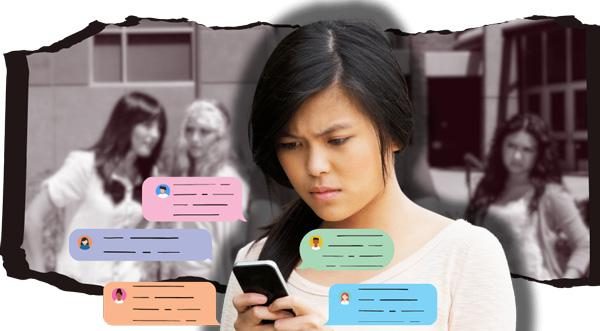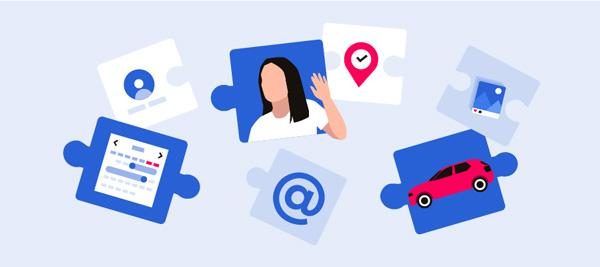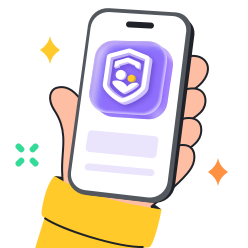What is doxing, and how can it be a risk for your children? Want to know? Okay. In this digital era, everybody is exposing themselves on the internet and sharing personal information. But this can push them into serious consequences. And, doxing is a major risk that comes with identity fraud.
To be honest, children and teenagers are the most at risk because they share most of their information on social media without thinking of the risks involved. In this blog, you will learn about doxing, why it is a growing concern, and most importantly, how you can safeguard your children from doxing. Let’s five in!
What is doxing?
“In simple terms, doxing is the act of revealing a person’s personal information to the public without their consent.”
In the current world, this includes names, photographs, addresses, contact information, headshots and in the most extreme cases, even school details. The basic purpose of all this is to threaten or harm the target person. We all know that private information is the critical matter of every individual, and exposing it without their consent can be totally life-changing.
The term “doxing” comes from the word “documents.” In the early days of the internet, people would say someone got “doxed” when their private documents or data were exposed. It began in online communities, where users seeking anonymity were targeted by others who sought to reveal their identities.
Over time, doxing became a more common way to harass or bully people online. And now, it is being used from social media to gaming platforms, to attack others by exposing their private lives.
Have you noticed that children and teenagers nowadays are at an elevated risk of being doxxed? Why? Because they often overshare a multitude of things about themselves online, like selfies, locations, their school, and even their daily routine. They do not realise that this adds up and can easily be collected and used against them.
As a parent, it is equally crucial for you to grasp what doxing is and how it is executed. Once you comprehend the associated dangers, you can take appropriate measures to safeguard your children and guide them on how to be safe on the internet.



How does doxing happen?
Doxing may take place in a variety of ways, and unfortunately, many children and adolescents unknowingly make the process easier. The first step in keeping your child safe is understanding how doxing works.
Social engineering
This is where someone attempts to get a sensitive piece of information from your child. It might begin with a conversation on a gaming platform or a social media application. The person can use seemingly innocent phrases like “What school do you go to?” or “What is the name of your pet?” to get further details.
Gathering public information
Doxers sometimes do not need to ask questions. Sometimes, all the information is easily available, and they can collect it with no hassle. Most children have their public accounts on TikTok, Instagram, and many gaming applications as well. With just a single photo of a street sign, school logo, or location tag, the doxer is provided with a precise location of where the child is.
With all the available information, doxers can create a full image of your child’s life.
Hacking accounts
Some doxers gain access to your child’s accounts through hacking. They can guess weak passwords or use logins from other websites. Yes, after gaining access to the account, they can obtain email addresses, private messages, and photos. And, after getting all the information, they share it publicly.
Most exploited platforms
Nowadays, kids are widely using social media applications like TikTok, Instagram, and Snapchat alongside online gaming. All of these are fun activities to engage with, but they could lead to serious problems if not approached with care.
So, children could share too much sensitive information or engage in conversations with people who seem friendly, but not in a real sense.
How children accidentally revealed more information
As children have an innocent mind, they often do not comprehend the consequences of oversharing. For example, selfies in school uniforms or simply chatting about a plan for the weekend can expose essential information. Well, teaching your child about privacy makes a profound difference.
Use real-time alerts to catch potential risks before they escalate.
The dangers of doxing
Understanding the risks that come with doxing is very important, especially when children are involved. This goes beyond just revealing personal information; their well-being, emotional health, physical safety, and even future are all at risk. Here are some key risks you should know about:



Psychological effects on victims
No doubt, emotional distress is a common thing when private information is released without consent. Kids often feel anxious, embarrassed, and fear the potential repercussions in equal measure. As a result, they may end up suffering from depression, social withdrawal, insomnia, or a breakdown of their social life.
Ultimately, the persistent fear of surveillance and judgment can force children to retreat, becoming shy, quiet, and socially isolated.
Real-world safety risks
Doxxing can endanger your child’s safety in real life. Giving out addresses or daily routines can lead to stalking or unwarranted attention. Your child might even become a target for bullies or strangers who send unsolicited, dangerous threats.
A great deal of risk lies in identity theft, too. Yes, criminals can access sensitive personal information and open accounts or commit fraud at will because they will gain access.
Impact of online doxing on children
It is obvious that the internet can keep data on a person forever. And, for particular kids, it can present a daunting challenge later in life when it comes to getting recruited in colleges or getting jobs.
Also, kids might develop trust issues and become very sceptical, which does not allow for any sharing of personal information with anyone. In extreme circumstances, doxing can affect their performance in schools and their social life.
Damage to reputation
Anonymous internet bullying (abuse) is becoming common and uncontrollable. These people solely depend on spreading misinformation about others to remain relevant. These acts not only affect them socially, but also medically, since it can cripple their mental health completely.
Increased cyberbullying
The amount of self-strapped humiliation young children face in today’s society is terrifying and needs to be addressed on a global level. Due to the availability of full information, kids can be subject to a great amount of bullying, which makes it tough for them to heal emotionally.
Knowing these risks, you can take precautionary steps to keep children safe and keep their right to privacy intact.
How to protect yourself and your kids from doxing?
Safeguarding yourself and your children from doxing is an issue that involves both concern and initiative. Enhancing your online security can certainly help mitigate risks and keep your family safe. Here’s a list outlining what you can do.
How to protect yourself from doxing: simple steps to stay safe online
– Best practices for online privacy
Use strong, unique passwords:
Create passwords that are lengthy, complex, and variable across accounts. Moreover, mix letters, numbers, and basic symbols. Strong passwords are essential for fortified online accounts as they are harder for hackers to guess.
Adjust privacy settings:
Go through social media and application settings to granularly adjust who can view your posts and details. Consider restricting visibility to trusted family and friends only. This helps reduce the chances of strangers accessing your private information.
Avoid oversharing sensitive information:
Refrain from sharing sensitive details like addresses, phone numbers, or daily routines. Doxers often target individuals whose private details are publicly accessible. Make it a point to filter personal information posted on the internet.
Think before you post:
It’s best to edit what you post based on how it might be perceived by others. Even harmless posts, such as an update or a picture, can go out of context and expose more than intended. Be careful not to share anything that reveals your identity or location.
Be careful with accepting friend requests:
And be cautious and only accept requests or messages from people you recognise. Strangers can use these social media platforms to trick you into revealing personal information.
Ever after regularly check your online presence:
Check for social media profiles and online accounts you have every once in a while. Maintaining an online presence requires a person to regularly update information. This can lead to the unnecessary reveal of personal information, which poses a security risk for the user.
Install all software updates:
Set your devices to install updates to apps, hardware, and security systems. This often prevents hackers which scrolling the web.
Two factor authentication (2FA):
You can make your account more secure by implementing 2FA. With two-step verification, it will be impossible to access your account with just your username and password alone. Well, it will require a secondary code for access.
Tools for online protection
Get a VPN and hide your IP address while encrypting your internet connection. This makes it more difficult for an internet hacker to track you. There are secure messaging apps like WhatsApp and Telegram that allow for encrypted chats. This will ensure your conversation stays private. These apps provide you with extra layers of security for your online activity.
How to protect your kids from doxing: teaching and monitoring for safety
It is important to explain to your children why protecting their privacy is important. Tell them the dangers of oversharing information like their address, school, neighbourhood and daily activities. Illustrate how anything posted online becomes a permanent fixture on the internet.
Apart from this, teach them to stop and think before they hit the post button, and encourage coming to you before sharing anything if in doubt.



From a parent’s perspective, FlashGet Kids is one of the best monitoring apps for its real-time monitoring capabilities. It will make you able to view your kid’s screen without disturbing their privacy.
Well, FlashGet Kids monitors a child’s social media activity, being attentive to posts or statements made in chats. It alerts parents in real-time when there is some risk to private details or a conversation with a stranger is being engaged in.
For instance, if a child posts their location on TikTok or reaches out to unfamiliar accounts on Instagram, FlashGet Kids can notify parents to take action in time. This enables parents to prevent Doxxing while simultaneously teaching children safe practices on the internet.
Conclusion
So, it is necessary to understand doxing and the risks associated with it. Prevention is necessary as it will protect your personal information. Therefore, teaching kids about privacy and the protection of their information is not a second option.
Another vital tool is monitoring online operations with FlashGet Kids. These apt steps will lead to the improvement of online security for both parents and children.

